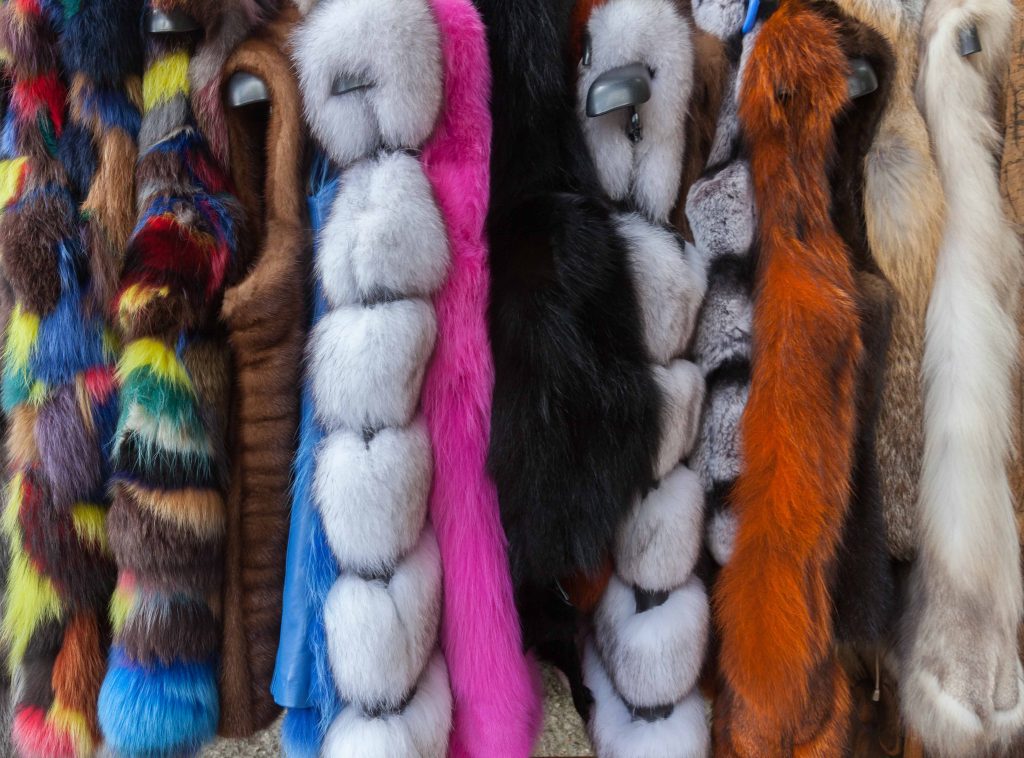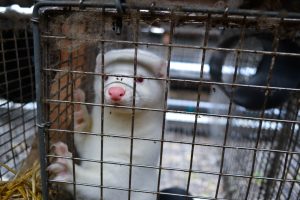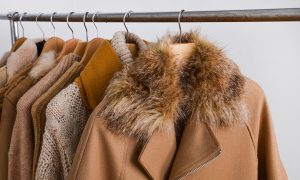What if we told you that the rim of faux fur on your hood, or bobble on your hat, may have come from a fox, cat or a rabbit? Or if we said that faux fur may cause more environmental damage than real fur? These are questions we’ve been putting to fashion students around Penryn campus.
A recent BBC Countryfile investigation unearthed some unhappy truths about the faux fur industry, and whether you are a lover of animals or the earth, the results may have shocked you.
Many items on the market masquerading as cheap faux fur may have started out life on an animal-rights violating fur farm well outside of EU jurisdiction. With poor supply-chain management, fur farmers based in Russia and China have found a market for their produce in unwitting clothes retailers and consumers of fast fashion. Cheaper to produce and easy to sell, the market for real, factory-farmed fur mislabelled as fake has been growing.
We interviewed Falmouth fashion photographer Helen Victoria-Lang about the controversy:
“I’ve recently been doing a project on faux fur and the fashion industry, I always check to see that fur is fake before buying. If you look at the roots of the fur you can visibly see if the fur is in skin or fabric” steps which people can take to ensure the authenticity of the product you’re buying.
We asked if there was anything the industry should be doing to keep real fur out of the faux fur market, “I’m not too sure there’s anything we can do, there’s too many ways people can get their hands on real fur and sell it as fake. There’s not so much companies can do, it’s down to us as consumers.”
This isn’t the only blow to the reputation of faux fur brought on by Helen Skelton’s’ Countryfile piece. She also discussed the environmental damage being caused by the plastic fibres that make up faux fur. Being made of plastic, faux fur has escaped most of the criticism of its plastic bag and bottle counterparts. But compared to animal fur, the material takes much less time to rip apart in your washing machine, and thousands of years to biodegrade.
‘Do we even need to make fur at all?’ there’s so many more materials that we can use.”
Helen was a strong supporter of faux fur, but when questioned about its new reputation as a non-biodegradable environmental hazard, she reasoned “because I know what happens to the animals, how they’re tortured for their fur, I’d be more on the side of ‘do we even need to make fur at all?’ there’s so many more materials that we can use.”
While Helen remains unchanged, the recent controversy has earned animal fur some supporters. Recently in the Huffington post, MP turned CEO of the International Fur Federation, Mark Oaten, argued the case for real fur, pointing out that mink manure is used as fertilizer, and fur animals are fed meat offal that may otherwise go to landfill, painting animal fur as the environmentally-friendly option. We put these counter-arguments to students around campus to see if anyone could be persuaded.
Georgia, an English and Creative Writing student, was at first a supporter for faux “because of the news I’m more aware now [of counterfeit faux fur] than I was a few years ago.” However, the news of the environmental issue around faux fur was a turning point, “I think if there’s an alternative you can use that does biodegrade then great, but I will now be more wary of buying faux fur… I’ve been made a bit more aware about it.”
Lorraine, also an English student and an Equestrian business owner, agreed that she was also a fan of faux fur, but admitted that she was not aware of the infiltration or of how to test whether fur is faux “I think that with new knowledge, to be fair, I’m now not so much a fan of faux fur anymore, I wouldn’t buy it.”
“I’d rather know that the whole animal was put to use.”
Lorraine took a more pragmatic approach to the fur or faux debate, arguing that it’s the circumstances surrounding the fur that decide which the more ethical option is: “It depends where the fur comes from. If it comes from animals who have died anyway, like for meat, then I have no problem with that. I’d rather know that the whole animal was put to use.”
If you wish to test your own furs to see if you’ve been duped, here’s three simple steps:
1: If you can see to the roots of the fur, take a look to see if the fibres are woven into a fabric, or poking out of a leather or skin-like material.
2: Faux fur would have been cut down to size, and therefore the ends will be neat, like a paintbrush. Natural fur tapers off at the ends, like thread.
3: Being made of plastic, faux fur will melt and give off a chemical smell when burned, while real fur will burn just like hair.



